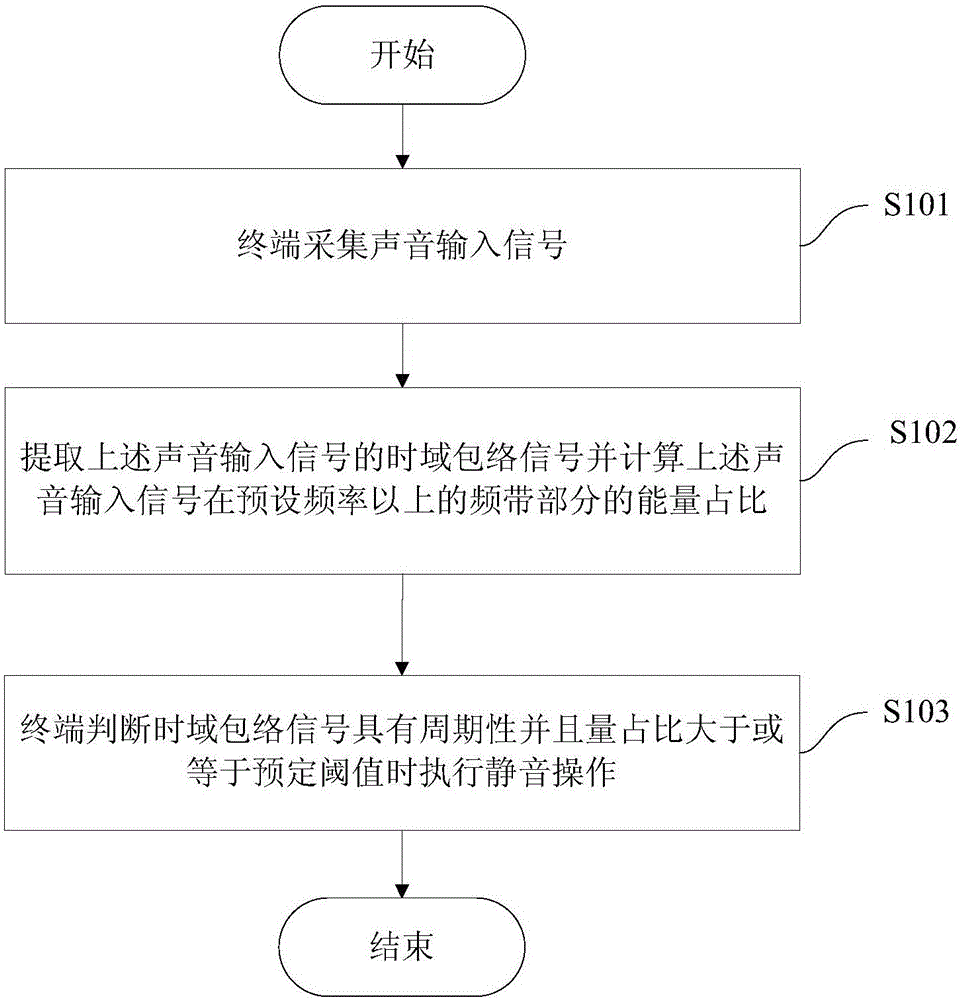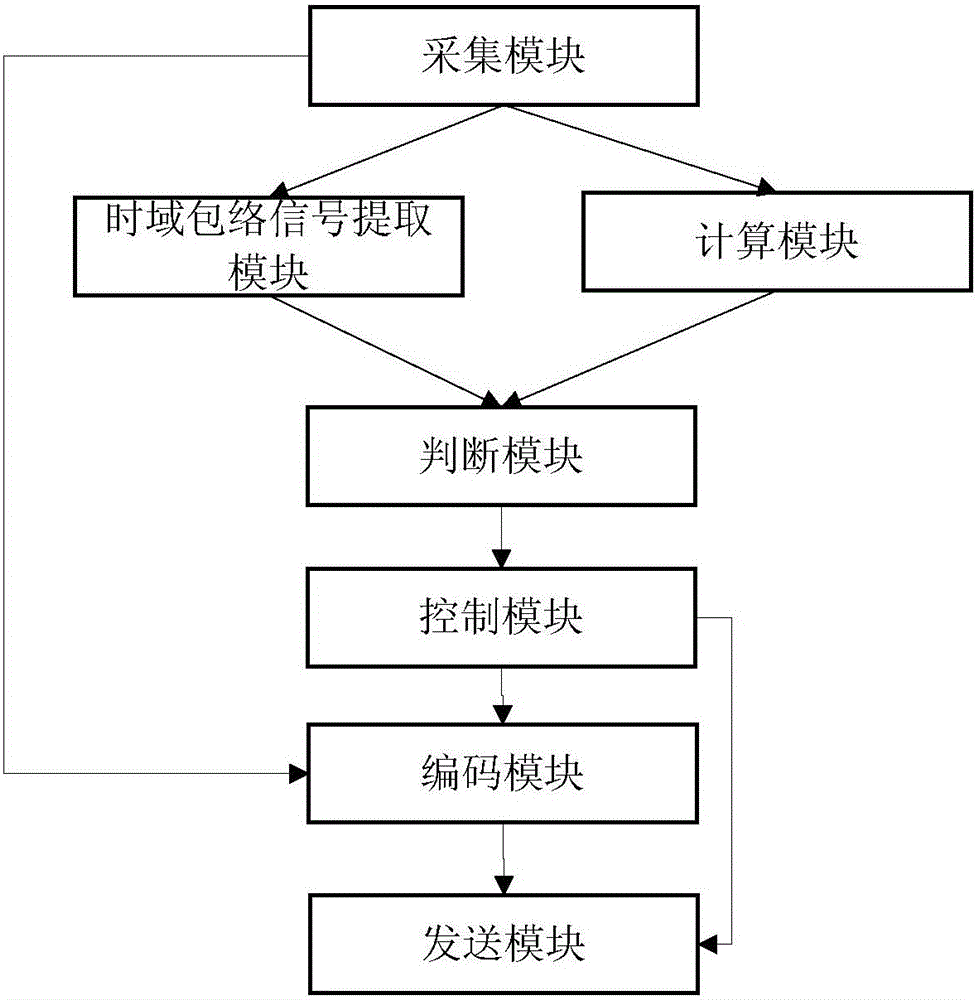Remote conference control method and device based on automatic recognition of howling sound
A remote conference and automatic identification technology, which is applied in the field of noise elimination and noise elimination for the audio signal at the sending end, can solve problems such as the inability to fundamentally eliminate the impact of howling sound process, so as to improve the user experience, eliminate the impact, and ensure the call quality effect
- Summary
- Abstract
- Description
- Claims
- Application Information
AI Technical Summary
Problems solved by technology
Method used
Image
Examples
Embodiment 1
[0049] figure 1 It is a flow chart of the remote conference control method based on the automatic identification of whistling sound in the first embodiment; the remote conference control method based on the automatic identification of whistling sound includes:
[0050] Step 101, the terminal collects a sound input signal;
[0051] Step 102, extracting the time-domain envelope signal of the above-mentioned sound input signal and calculating the energy ratio of the frequency band portion of the above-mentioned sound input signal above the preset frequency;
[0052] Step 103, the terminal performs a mute operation when it is judged that the time-domain envelope signal has periodicity and the volume ratio is greater than or equal to a predetermined threshold.
[0053] The method further includes that when the time-domain envelope signal does not have periodicity or the energy ratio is less than a predetermined threshold, the terminal encodes the sound input signal and sends it to t...
Embodiment 2
[0067] image 3 This is the structure diagram of the remote conference control device based on automatic whistle recognition in the second embodiment; the device is applied to a terminal and includes a collection module, a time-domain envelope signal extraction module, a calculation module, a judgment module, and a control module.
[0068] The acquisition module is used to collect the sound input signal;
[0069] The time-domain envelope signal extraction module is used to extract the time-domain envelope signal of the above-mentioned sound input signal;
[0070] The calculation module is used to calculate the energy ratio of the frequency band part of the sound input signal above the preset frequency;
[0071] The judgment module is used to judge whether the time-domain envelope signal has a period and whether the energy ratio is greater than or equal to a predetermined threshold;
[0072] The control module is configured to perform a mute operation on the above-mentioned t...
Embodiment 3
[0077] Figure 4 It is the flow chart of the remote conference control method based on the automatic identification of howling sound in the third embodiment; the method includes:
[0078] In step 401, the server receives a voice input signal sent by at least one terminal of a calling party in the remote conference.
[0079] Step 402: Perform a howling sound recognition process on all terminals in the above-mentioned calling party, and perform a howling sound recognition process on each terminal, including: extracting the time domain envelope signal of the sound input signal of the terminal and calculating the sound input signal in the preset value. The energy ratio of the frequency band part above the frequency, when the time-domain envelope signal has periodicity and the energy ratio is greater than or equal to a predetermined threshold, it is determined that the voice input signal of the terminal has a whistling sound; otherwise, it is determined that the voice of the termin...
PUM
 Login to View More
Login to View More Abstract
Description
Claims
Application Information
 Login to View More
Login to View More - R&D
- Intellectual Property
- Life Sciences
- Materials
- Tech Scout
- Unparalleled Data Quality
- Higher Quality Content
- 60% Fewer Hallucinations
Browse by: Latest US Patents, China's latest patents, Technical Efficacy Thesaurus, Application Domain, Technology Topic, Popular Technical Reports.
© 2025 PatSnap. All rights reserved.Legal|Privacy policy|Modern Slavery Act Transparency Statement|Sitemap|About US| Contact US: help@patsnap.com



